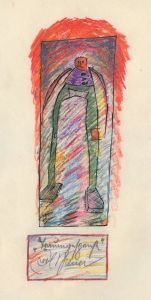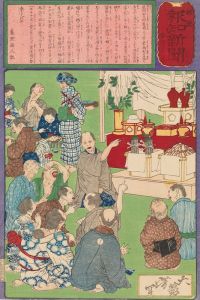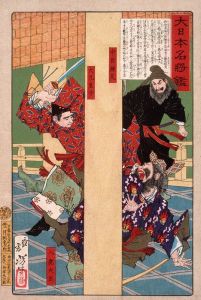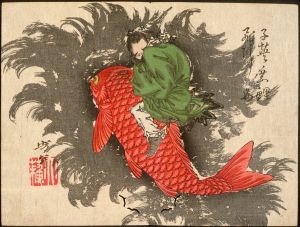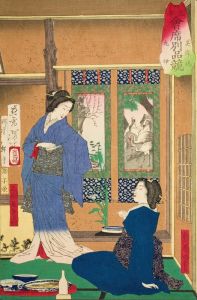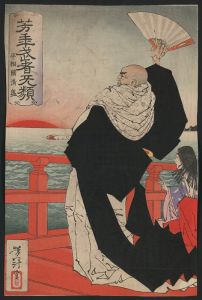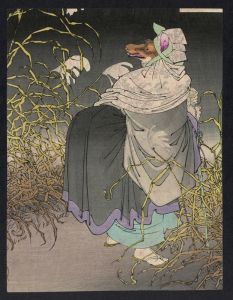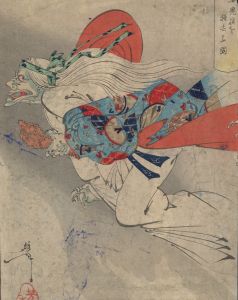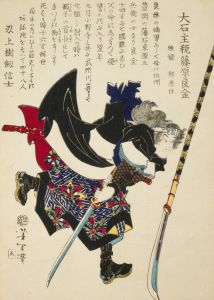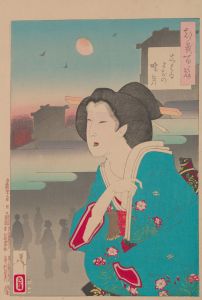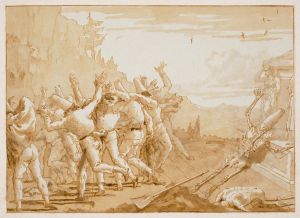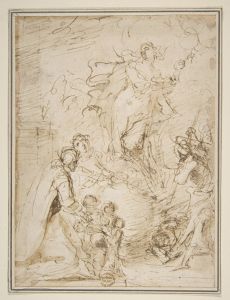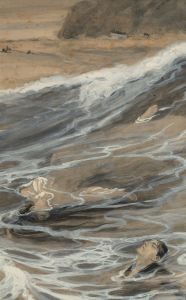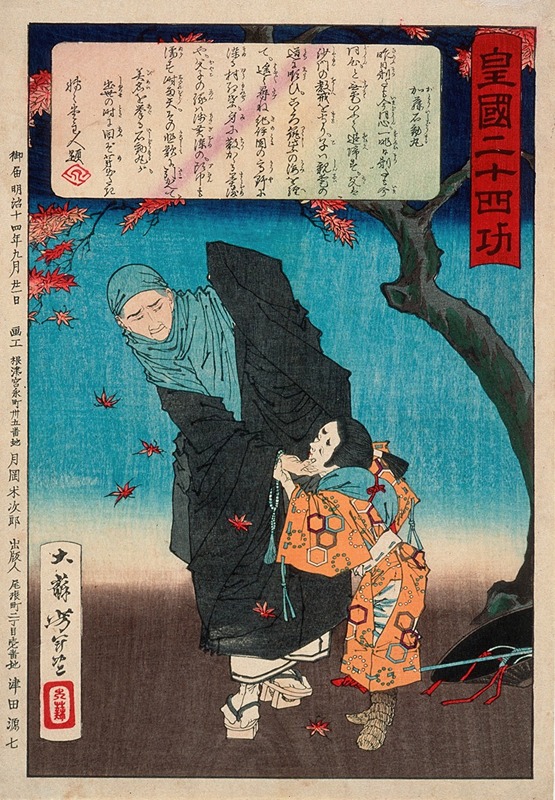
Karukaya Dōshin Refusing to Recognize Ishidōmaru
A hand-painted replica of Tsukioka Yoshitoshi’s masterpiece Karukaya Dōshin Refusing to Recognize Ishidōmaru, meticulously crafted by professional artists to capture the true essence of the original. Each piece is created with museum-quality canvas and rare mineral pigments, carefully painted by experienced artists with delicate brushstrokes and rich, layered colors to perfectly recreate the texture of the original artwork. Unlike machine-printed reproductions, this hand-painted version brings the painting to life, infused with the artist’s emotions and skill in every stroke. Whether for personal collection or home decoration, it instantly elevates the artistic atmosphere of any space.
"Karukaya Dōshin Refusing to Recognize Ishidōmaru" is a woodblock print by the renowned Japanese artist Tsukioka Yoshitoshi, created in 1886. Yoshitoshi is celebrated for his innovative approach to traditional ukiyo-e art, and this particular work is part of his series "New Forms of Thirty-Six Ghosts" (Shinkei Sanjūrokkaisen), which explores supernatural and dramatic themes from Japanese folklore and history.
The print depicts a poignant scene from a famous Japanese legend involving Karukaya Dōshin, a monk who was once a samurai named Ono no Komachi. The story is set during the Heian period and revolves around themes of duty, sacrifice, and the renunciation of worldly ties. Karukaya Dōshin, originally known as Ono no Komachi, becomes a monk to escape the political intrigues and personal vendettas of his past life. In doing so, he leaves behind his family, including his young son, Ishidōmaru.
The scene captured by Yoshitoshi portrays the moment when Ishidōmaru, after a long search, finds his father at a remote temple on Mount Kōya. Despite the emotional reunion, Karukaya Dōshin, adhering to his monastic vows, refuses to acknowledge his son. This act of denial is not out of lack of love but rather a testament to his commitment to his spiritual path and the renunciation of his former life. The emotional intensity of this moment is a central theme in the print, highlighting the conflict between personal desire and spiritual duty.
Yoshitoshi's depiction is notable for its dramatic use of color and composition, which enhances the emotional gravity of the scene. The artist employs a dynamic interplay of light and shadow to convey the inner turmoil of the characters. The expressions and postures of Karukaya Dōshin and Ishidōmaru are rendered with great sensitivity, capturing the depth of their emotions. Yoshitoshi's mastery in portraying human emotion and psychological complexity is evident in this work, making it a compelling piece within his oeuvre.
The "New Forms of Thirty-Six Ghosts" series, to which this print belongs, is significant in Yoshitoshi's career as it marks a period of artistic maturity and innovation. The series reflects his interest in the supernatural and the psychological, themes that were gaining popularity in the late Edo and early Meiji periods. Yoshitoshi's work during this time is characterized by a blend of traditional ukiyo-e techniques with new stylistic elements, reflecting the changing cultural landscape of Japan as it opened up to Western influences.
"Karukaya Dōshin Refusing to Recognize Ishidōmaru" is a testament to Yoshitoshi's skill in storytelling through visual art. It captures a timeless narrative of human struggle and the complexities of familial bonds, resonating with audiences both in Japan and internationally. The print remains an important example of Yoshitoshi's contribution to the ukiyo-e tradition and his ability to convey profound emotional and spiritual themes through his art.






